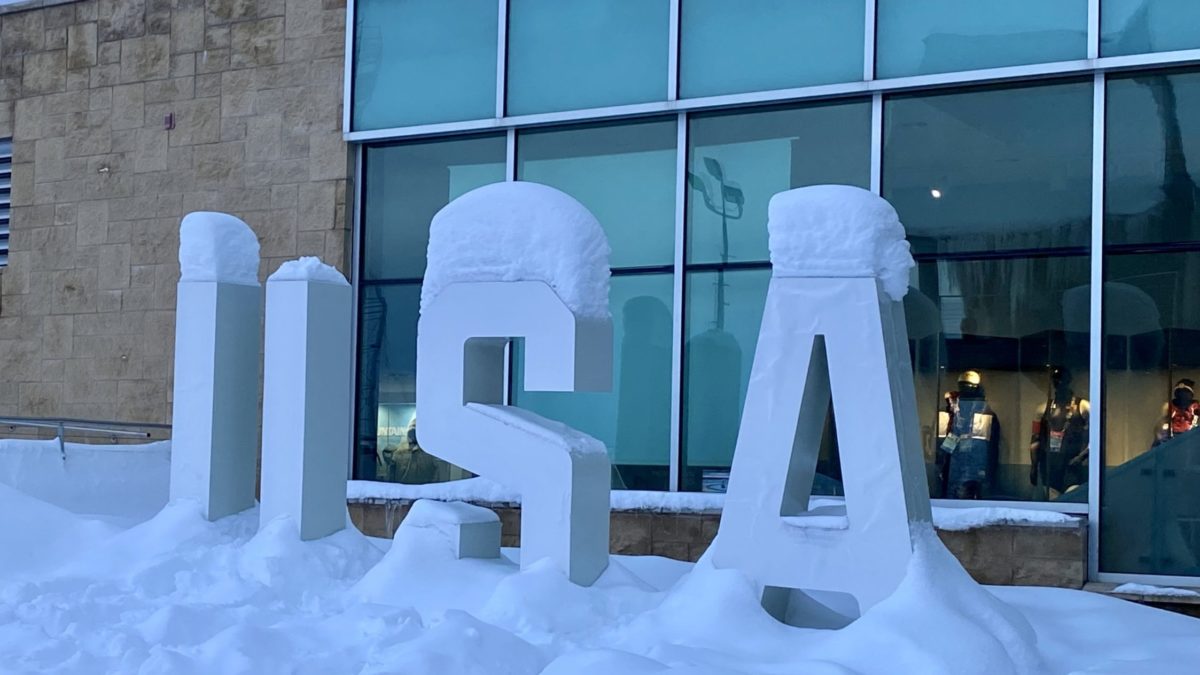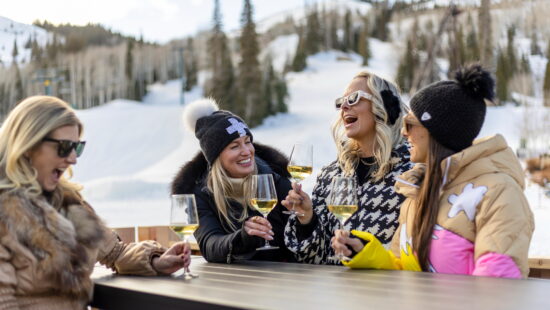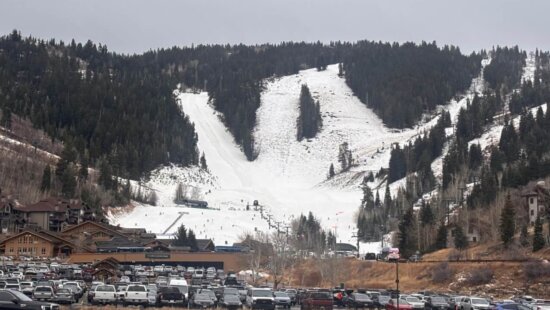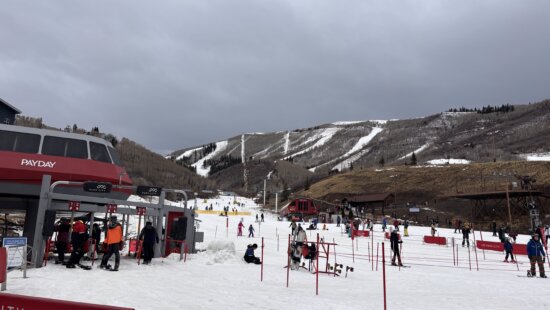Sports
Northern Utah’s enduring legacy as a world cup location

Team USA letters on display at the Utah Olympic Park, a USOPC Training Site. Photo: Michele Roepke // TownLift
PARK CITY, Utah — Northern Utah continues to be an industry leader in terms of the sheer number of world cups hosted and its robust schedule.
It all started with the Olympics when Park City caught international event fever, and sports fans never took their collective foot off the gas.
Before, during, and after the Salt Lake 2002 Olympics, Tom Kelly had his finger on the pulse of the U.S. Ski Team’s World Cup action as its communications director. At Deer Valley’s World Cup on Wednesday night, where he was the press conference emcee, he told TownLift, “You can put a lot into examining the process of obtaining and maintaining world cups and so forth, but honestly, a town just really has to have the culture to support it, it has to have the resort that’s willing to take it on, and a very big part of it is having a resort that’s willing to commit to the dedication of the runs closed to the public for that time frame, that’s a huge commitment for resorts.”
Kelly went on to say, “Deer Valley learned early on that this was something that behooved its brand, and they’ve kept it going. If you go back to the early days of Deer Valley when it began as a resort, it didn’t have a freestyle culture necessarily; it was just something that it had the opportunity to get into the Olympics and hold an early Test Event, so it started doing world cups. You could go look at the alpine skiing America’s Opening World Cup that existed for quite a while at Park City Mountain, and it just reached a point where it wasn’t necessarily a value proposition that was so meaningful to the resort at a point, and that’s just kind of the way it is, not to say the desire and capability isn’t simmering all the time to host again. Those decisions come down to the U.S. Ski and Snowboard team, and CEO Sophie Goldschmidt is great at balancing the acquisition as a nation of these events and the distribution therein from coast to coast.”
Kelly continued, “It was a combination of things that started Utah’s positive trajectory of being so lucky so as to host this plethora of world cups. There’s no set formula that says if you do A, B, and C, but a lot of what it comes down to is culture and community. The community has to be right for it, there has to be a desire to host, and there has to be a supporting infrastructure in the community.”
He was quick to point out that hosting an alpine world cup is an more expensive endeavor because, as savvy spectators know, for moguls and aerials, a handfull of strategically-placed tv cameras, cables, and crews capture all the action. For alpine, the field-of-play is triple length mandating multiple more moving parts.
There is no short list written in stone of where world cups are to be hosted. Old reliables ski destinations like Killington, Waterville Valley, Copper, Mammoth, Beaver Creek, Tahoe and Aspen are indeed in the heavy rotation, but also up-and-coming communities like Copper Peak in Michigan have been trying for years to get all their ducks in a row for a first successful ski jumping world cup bid, and Minneapolis is hosting a cross-country event this winter.
Popular places like Snowbird cannot be considered due to logistics. Large events like world cups, let alone Olympic events, must have a way to ingress and egress. If there were to be an unfortunate issue with, for purposes of this conversation, a natural disaster like an avalanche covering the one road in and out of the Canyon or a man-made disaster created a situation whereby thousands of spectators needed to interlodge, it wouldn’t be feasible.
Luke Bodensteiner is the director at the 2002 Olympic cross country venue Soldier Hollow. He told TownLift, “As one of the world’s premier Nordic facilities, we’re honored to have been asked once again to organize a stop of the BMW International Biathlon Union World Cup this March. It’s a privilege that we take seriously and provide to our community, and anticipate that this won’t be the last major event we deliver, which could include another biathlon world cup as early as 2029.”
R.J. Shannon has been the track manager at the Utah Olympic Park for 20 years. He told Townlift at the beginning of this season, during double Jr. Luge World Cups, “The Lake Placid track, the only other one in the States, will host both a Luge and a Bobsled/Skeleton World Cup this season after we here at the UOP held a successful World Cup last season for Luge. There’s a healthy partnership between the two venues to ensure that world cups are a shared opportunity for the U.S. to showcase its passion for and skill set to host the world’s sliders as often as possible.”
Volunteers are a massive part of the equation, as world cups require scores of locals with tribal knowledge of the venues, the sports, the athletes and the spectatorship. There’s nary a shortage of people who raise their hand to stand out in the cold for long hours, zero pay and little acknowledgement, but a heap of thanks from the community-at-large, albeit often unspoken, for doing so much of the proverbial heavy lifting at world cups.
Brian Boudreau is the head coach of the Park City Speedskating Club and a retired athlete who skated with world cup athletes. He told TownLift, “At the longtrack Speedskating event held in at the Utah Olympic Oval the Salt Lake Valley last week, there were more spectators and community supporters there cheering on USA skaters than were allowed to watch in person during the Olympics in 2002.”
The Deer Valley World Cup is for men and women, moguls, dual moguls, and aerials. By contrast, some world cups are much more fractioned. For example, Lake Placid, which has hosted not one but two winter Olympics, is hosting a world cup this spring that is only for ski jumping and only for men.
There are 11 ski world cups around the USA this season, the most in history.
It’s not simply because Utah hosted these sports in the Olympics. Curling world cups have never been held in Utah, nor has figure skating, which speaks to Kelly’s earlier explanation that the specific culture means so much to the process.
Deer Valley’s World Cup occurring every year is an outlier situation, a good one if you ask anyone looking at the bottom line in the Park City hotels, restaurants, grocery stores, car rentals, small businesses, etc., which benefit year after year.
One of the reasons world cup culture is such a juggernaut around Park City is that, unlike in Calgary, unlike in Colorado, unlike in California, whose citizenry has illustrated over the decades, both at the ballot box and in actionable items, that hosting Olympics is just not as much of a priority as it is in Utah.
This thriving enthusiasm in and around Salt Lake City bodes well to move from the current status of, as the International Olympic Committee has put it, “preferred” host city for the 2034 Olympic Games to the actual host city.



















